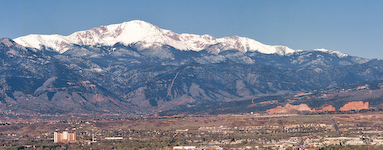Abortion Revisited - by Phil Stahl: Freethought Views August 2008
|
Abortion Revisited by Phil Stahl With Catholic Bishops once more warning voters about their "eternal salvation" (in connection with voting for pro-abortion candidates) and a proposed new amendment to protect the "personhood" of the unborn making its way toward the ballot in Colorado - it is time once more to revisit the issue of abortion. |
Consider for a moment that those who insist a fetus is a full human person are guilty of committing the genetic fallacy. Antony Flew notes in Thinking About Thinking, "The genetic fallacy consists in arguing that the antecedents of something must be the same as their fulfillment. Or, that a fetus, even from the moment of conception - must really be, because it is going to become - a person." (pg.101) |
When one thinks about this seriously, it's bare bollocks. It puts an essential biological parasite (inasmuch as it can't sustain independent existence) on the same level as say….a fully formed nineteen-year old fighting in Baghdad. It thereby also puts the death of the latter person - who has formed hundreds of mature attachments, performed thousands of duties, and created multiple art forms/crafts, on the same level as eliminating an agglomeration of cells with a rudimentary human shape but no personality, no conscious awareness that rises to the level of a three-month old chimp. |
Carl Sagan and Ann Druyan wrote one of the most audacious articles on abortion, which appeared in the April 22, 1990 issue of Parade magazine. The authors, using sound science, attempted to steer a midway path between the contentious extremes of the abortion minefield. What they sought to determine is whether there was some point after which NO abortion should ever be performed. |
|
|
Ramping up their case, the authors accurately note that the greatest "abortionist" of all is not Man, but Nature. She aborts with a frequency that boggles the mind, compared to human intervention and artifice. Thus, totally purist anti-abortionists are left to defend their position against the vicious vagaries of Mother Nature, while they attempt to erect absolutist sanctions against poor women, or those lacking access to proper birth control. |
Finally, in what can only be described as a coup-de-grace, Sagan and Druyan note that the Catholic Church itself held that abortion was allowable up to about the first three months of pregnancy - "according to the Catholic Church's first and long standing collection of Canon Law" - citing John Connery, S.J. a leading historian of the Church's teaching on abortion. |
The authors notes: "it was not until 1869 that abortion for any reason became grounds for excommunication." |
Interestingly, the "papal infallibility" doctrine was first proclaimed in 1870. |
Which brings up the question: How will the Catholic bishops - who so impetuously condemn pro-choice candidate voters to Hell today- reconcile that with the Church's stance pre-1869? |
|
Phil Stahl: August 2008 |
